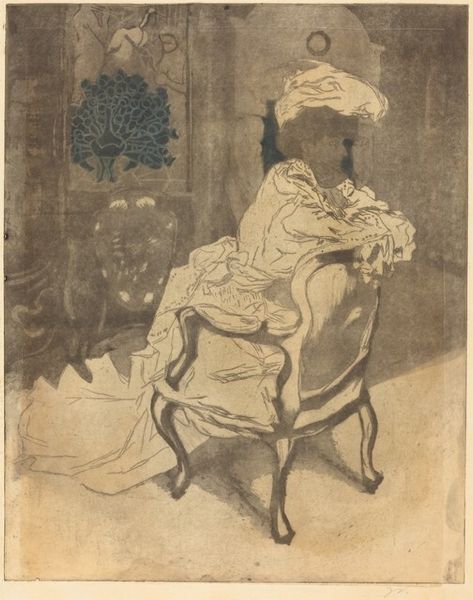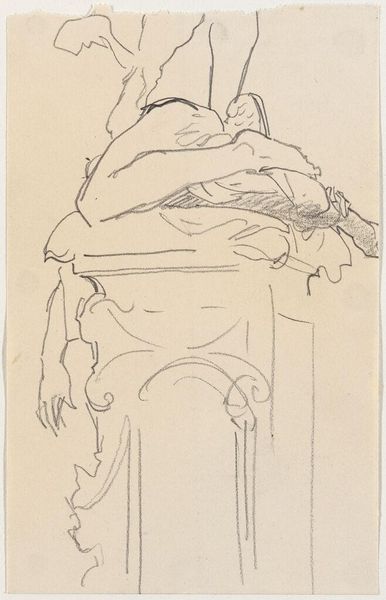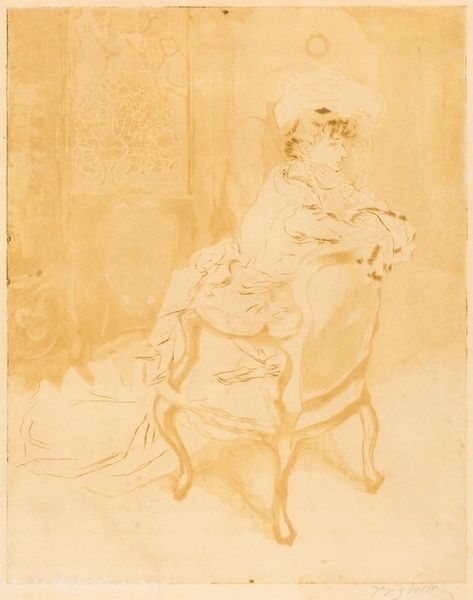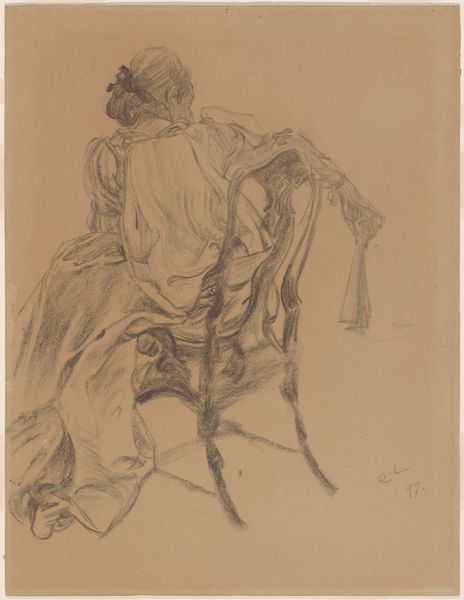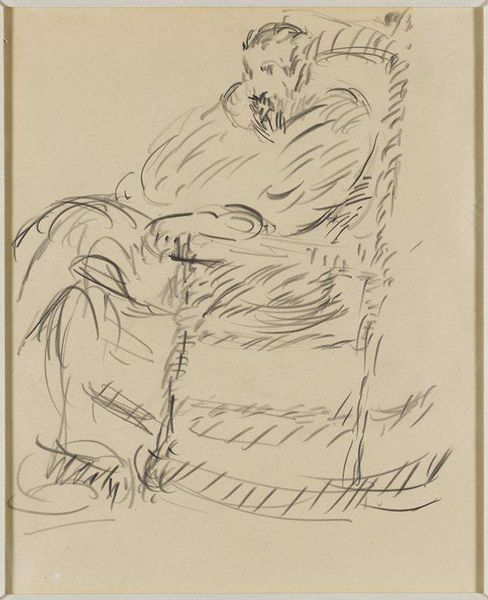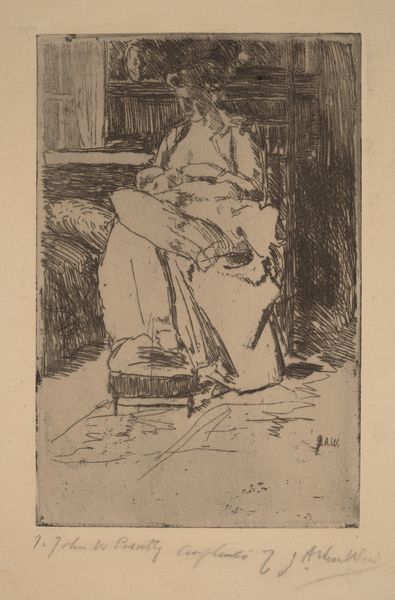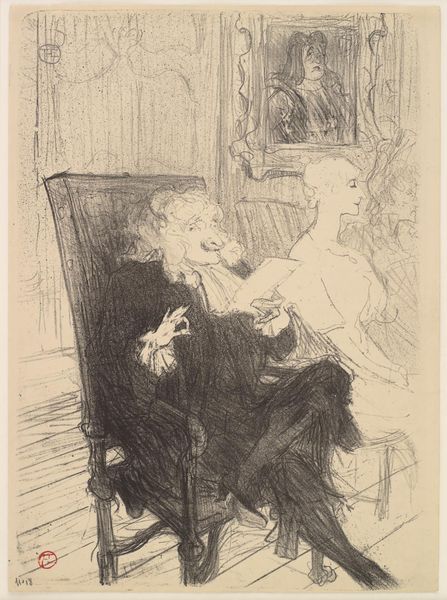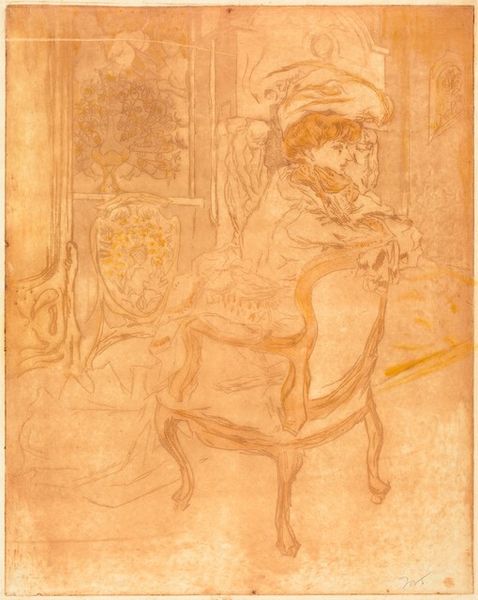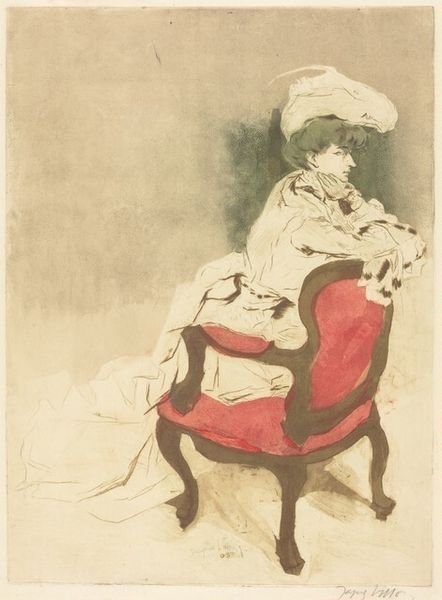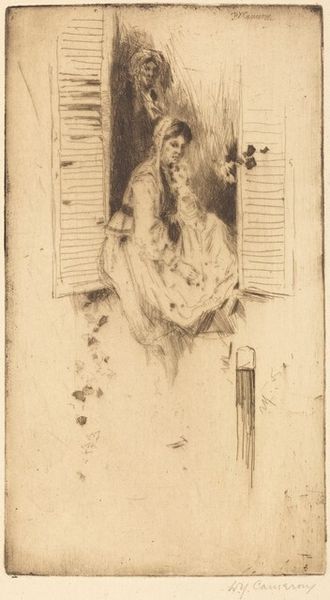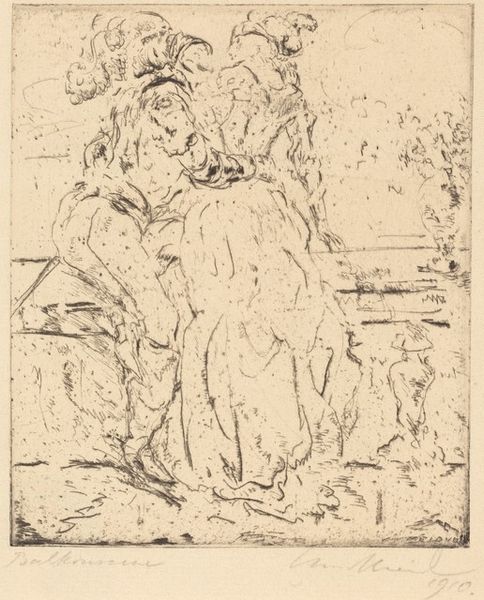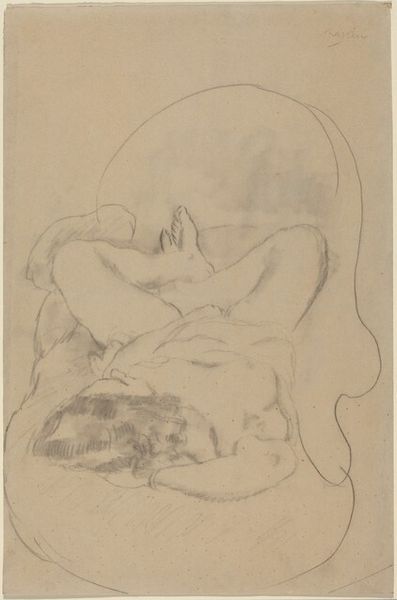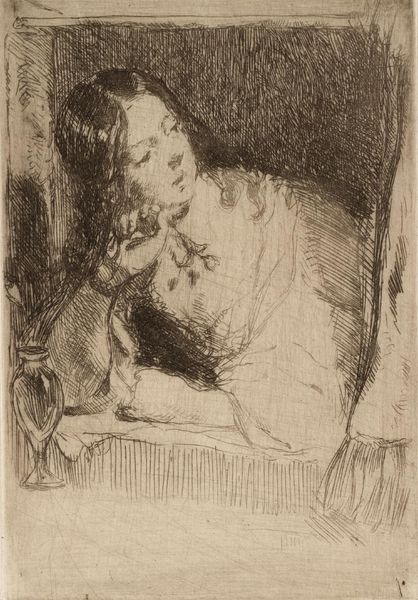
drawing, print, etching
#
portrait
#
drawing
#
ink drawing
# print
#
etching
#
figuration
Dimensions: plate: 47.7 x 37.2 cm (18 3/4 x 14 5/8 in.) sheet: 58.7 x 43.5 cm (23 1/8 x 17 1/8 in.)
Copyright: National Gallery of Art: CC0 1.0
Curator: Here we have Jacques Villon’s "La Parisienne (2)," created in 1902. It’s a stunning etching, capturing a moment of quiet introspection. Editor: There's a fragility here. It's a fleeting moment rendered in ink. The woman seems weighed down by her ornate attire, a visible manifestation of societal expectations. Curator: Indeed, the materiality of the print itself contributes to this effect. The fine lines, the delicate shading achieved through the etching process, creates a sense of ephemeral beauty, yet controlled structure, emphasizing shape and texture, an intricate dance between positive and negative space. Editor: I think Villon is also hinting at the confines of gender at the time. Parisiennes, expected to be paragons of fashion and grace, were simultaneously imprisoned by these roles. Note the almost claustrophobic space around her, accentuated by the cluttered interior objects, the ornate vase, the framed details in the background—as if those material forms also confine and judge her from afar. Curator: The composition is noteworthy too. The gaze is drawn initially to the seated woman and then led by diagonals out toward those background artifacts, establishing relationships within the framed visual world. What kind of symbolic reading could we establish when discussing her interiority? Editor: Exactly. What is it we want her to consider as she gazes distantly out of frame, the unachievable, or a life lived beyond the patriarchal structures of Parisian society? She may be contemplating escape—not a literal one, but one within her mind. She's not empowered—and this is telling, I believe. She represents the constraints on women of the era. Curator: It's a very potent representation of early 20th-century societal constraint, even in such an apparently tranquil etching. It would be interesting to compare this to other portraits of Parisian women to understand her placement within social hierarchy based on pose alone, based on dress alone. Editor: Yes, placing the artwork in conversation with social norms helps unlock it. Ultimately, the strength of the artwork lies not only in its delicate craftsmanship but in its invitation to explore those historical power dynamics. Curator: Absolutely. “La Parisienne” becomes more than just a portrait; it's a visual portal. Editor: Right, to considering the stories of countless women and how these norms influenced them. It's an act of visual archaeology, unearthing the layered meanings of art within society.
Comments
No comments
Be the first to comment and join the conversation on the ultimate creative platform.
